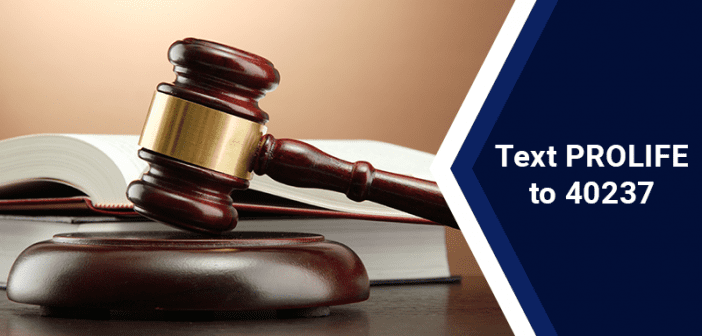How must the Supreme Court of the United States (SCOTUS) redress their most grotesque mistake? For nearly 50 years, Roe v. Wade (1973) has stained the court’s moral authority and eroded our nation’s commitment to legal equality. On multiple occasions during that period, a requisite five (out of nine) SCOTUS justices likely believed Roe was an erroneous ruling, untethered from our Constitution’s meaning, purpose, structure, or tradition. Yet Roe has withstood a barrage of Pro-Life laws meant to persuade SCOTUS to reverse course. Now, by appropriating some of the justices’ own frameworks for addressing precedent, Mississippi is directly asking SCOTUS to dispense with Roe entirely.
Stare decisis is the legal doctrine by which SCOTUS can both renounce and administer a precedent. Even though a decision might be incontrovertibly wrong, even though at least five justices have positively said as such, and even though the current case affords the justices a chance to remedy the error, stare decisis may mean the wrong outcome perseveres. Chief Justice John Roberts, an institutionalist who perpetually attempts to navigate SCOTUS above the politically fraught atmosphere, has characterized stare decisis as “vital to the proper exercise of the judicial function.” Indeed, this view is probably shared by all nine justices, who do not think frequent, mindless flip-flopping on statutory or constitutional questions makes good law. But this view is also the likely reason why Roe still stands.
In 1992, many activists and legal experts—watching a Republican-appointed majority SCOTUS—expected Roe to tumble in Planned Parenthood v. Casey. Instead, what they received was a decision that refashioned but affirmed Roe, mostly on stare decisis grounds. The substance of Casey has remained essentially undisturbed since, despite Pro-Life efforts to weaken SCOTUS’s abortion jurisprudence. This fall, SCOTUS will hear the most consequential abortion case in thirty years when lawyers argue the constitutionality of a Mississippi 15-week abortion ban in Dobbs v. Jackson Women’s Health Organization. Mississippi originally asked, “whether all pre-viability prohibitions on elective abortions are unconstitutional.” Now, Mississippi is asking SCOTUS to reverse Roe entirely.
To succeed in making the case that Roe must go, Mississippi must formulate a petition appealing to the swing justices. Once occupied solely by Chief Justice Roberts, this role is now primarily held by Justice Brett Kavanaugh. Both Chief Justice Roberts and Justice Kavanaugh are reliably conservative; they rarely issue a ruling ladled in progressive legal thought. However, both are also immensely concerned about the reputation and politicization of their court—after all, everything is politicized these days. Chief Justice Roberts and Justice Kavanaugh likely agree that Roe is incorrect and that the Mississippi law is constitutional. What is not clear is whether their deciding votes will see the Supreme Court rule accordingly. Recognizing this, Mississippi submitted a brief that systematically addresses five stare decisis factors put forth by Chief Justice Roberts and Justice Kavanaugh.
First, Justice Kavanaugh believes a precedent must not be merely wrong, but “grievously or egregiously wrong,” to merit reversal. Roe surely qualifies. Roe is a fabrication from seven justices zealously determined to impose their axiological worldview on everyone else. To say that Roe is merely wrong is to woefully understate the magnitude of the error. As the Mississippi brief concludes, “Roe and Casey are, in sum, irreconcilable with constitutional text and ‘historical meaning’—which provides compelling grounds to overrule them.”
Second, Chief Justice Roberts has identified a precedent’s practical workability as a critical determinant of stare decisis. Roe is nothing if not unworkable. The undue burden test, the central feature of SCOTUS’s abortion jurisprudence, evades any concrete understanding. Roe itself originally blocked states from pursuing their interest in protecting preborn children. Federal judges vehemently disagree on how to apply Roe and Casey to Pro-Life laws, and even the Supreme Court justices maintain differing interpretations of the cases. When SCOTUS tries to ease confusion about Roe and Casey, only heightened uncertainty follows.
Third, Justice Kavanaugh asks if the precedent has caused severe practical and jurisprudential issues. Beyond the estimated 70 million preborn children who have fallen victim to abortion since Roe, the Mississippi brief lists several enduring problems with SCOTUS’s abortion jurisprudence. Abortion policy is no longer a function of democratic processes; Roe has ramped up the national partisan divide to a feverish level; abortion garners special privileges in the judiciary; and, Roe has guaranteed SCOTUS is necessarily intertwined in the abortion controversy.
Fourth, Chief Justice Roberts believes SCOTUS must consider developments in law and fact. Legally, Roe and Casey “represent a stark departure from this court’s general approach of applying neutral rules of law.” Factually, advances in science, medicine, and culture have both eliminated any “need” for abortion and illuminated the humanity of preborn children. Abortion, indisputably, takes a human life—a reality not ubiquitously recognized in 1973.
Fifth, both Chief Justice Roberts and Justice Kavanaugh worry about agitating the reliance some people may have on a precedent. However, as Mississippi’s brief notes, abortion has remained a debated cultural controversy, policy issue, and judicial precedent throughout the United States. Moreover, reversing Roe does not unsettle reliance interests in the traditional sense. Future abortions follow future pregnancies; with personal responsibility, any current reliance on Roe can seamlessly end.
Precedent does not tie Supreme Court justices to a particular ruling, nor does erroneous precedent ensure the justices will rectify the mistake. Roe is unequivocally not an application of constitutional law. At least five, and probably six, of the current justices likely agree with that sentiment.
The justices do not have to reverse Roe to uphold Mississippi’s law, but they should. The doctrine of stare decisis exists to protect the rule of law and the integrity of the judicial system. And that is precisely why Roe must go.

